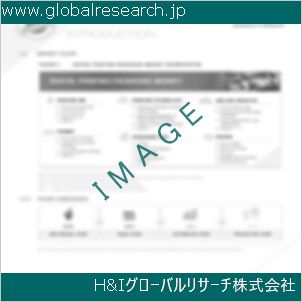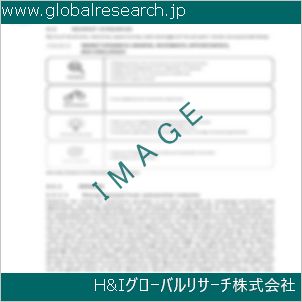1. Preface
1.1. Objectives of the Study
1.2. Market Segmentation & Coverage
1.3. Years Considered for the Study
1.4. Currency & Pricing
1.5. Language
1.6. Limitations
1.7. Assumptions
1.8. Stakeholders
2. Research Methodology
2.1. Define: Research Objective
2.2. Determine: Research Design
2.3. Prepare: Research Instrument
2.4. Collect: Data Source
2.5. Analyze: Data Interpretation
2.6. Formulate: Data Verification
2.7. Publish: Research Report
2.8. Repeat: Report Update
3. Executive Summary
4. Market Overview
4.1. Introduction
4.2. Refractories Market, by Region
5. Market Insights
5.1. Market Dynamics
5.1.1. Drivers
5.1.1.1. Continuous expansion of the manufacturing industries globally
5.1.1.2. Growing infrastructure development activities with government investment
5.1.2. Restraints
5.1.2.1. Limited availability and volatility in prices of raw materials
5.1.3. Opportunities
5.1.3.1. Increasing research & development activities for recycling for refractories
5.1.3.2. Emerging potential toward customized refractories
5.1.4. Challenges
5.1.4.1. Stringent regulations by the government for the usage and manufacturing of refractories
5.2. Market Segmentation Analysis
5.2.1. Alkalinity: Rising use of basic refractories in the steel making process
5.2.2. Physical Form: Increasing demand for shaped refractories as they offer greater precision and durability compared to the unshaped refractories
5.2.3. Manufacturing Process: Growing use of formed manufacturing process in the refractory production
5.2.4. Application: Increasing innovation and expansion of product portfolios by the key players in response to evolving industry applications
5.3. Market Trend Analysis
5.3.1. Growing industrial sector and infrastructure development coupled with government regulations promoting sustainability and safety in refractory materials
5.3.2. Increasing R&D investment for advanced materials and processes along with low production costs and favorable business conditions in the Asia-Pacific region
5.3.3. Growing refractories production with increased focus on sustainability in the EMEA region
5.4. Cumulative Impact of COVID-19
5.5. Cumulative Impact of Russia-Ukraine Conflict
5.6. Cumulative Impact of High Inflation
5.7. Porter’s Five Forces Analysis
5.7.1. Threat of New Entrants
5.7.2. Threat of Substitutes
5.7.3. Bargaining Power of Customers
5.7.4. Bargaining Power of Suppliers
5.7.5. Industry Rivalry
5.8. Value Chain & Critical Path Analysis
5.9. Regulatory Framework
6. Refractories Market, by Alkalinity
6.1. Introduction
6.2. Acidic & Neutral Refractories
6.3.1. Alumina Refractories
6.3.2. Carbon Refractories
6.3.3. Chromite Refractories
6.3.4. Fireclay Refractories
6.3.5. Silica Refractories
6.3.6. Zirconia Refractories
6.3. Basic Refractories
6.4.1. Dolomite Refractories
6.4.2. Magnesite Refractories
7. Refractories Market, by Physical Form
7.1. Introduction
7.2. Shaped Refractories
7.3. Unshaped Refractories
8. Refractories Market, by Manufacturing Process
8.1. Introduction
8.2. Dry Press Process
8.3. Formed
8.4. Fused Cast
8.5. Hand Molded
8.6. Unformed
9. Refractories Market, by Application
9.1. Introduction
9.2. Glass Tanks
9.3. Lime & Cement Kilns
9.4. Metallurgical Burners & Furnaces
9.5. Regenerators
9.6. Stoves
10. Americas Refractories Market
10.1. Introduction
10.2. Argentina
10.3. Brazil
10.4. Canada
10.5. Mexico
10.6. United States
11. Asia-Pacific Refractories Market
11.1. Introduction
11.2. Australia
11.3. China
11.4. India
11.5. Indonesia
11.6. Japan
11.7. Malaysia
11.8. Philippines
11.9. Singapore
11.10. South Korea
11.11. Taiwan
11.12. Thailand
11.13. Vietnam
12. Europe, Middle East & Africa Refractories Market
12.1. Introduction
12.2. Denmark
12.3. Egypt
12.4. Finland
12.5. France
12.6. Germany
12.7. Israel
12.8. Italy
12.9. Netherlands
12.10. Nigeria
12.11. Norway
12.12. Poland
12.13. Qatar
12.14. Russia
12.15. Saudi Arabia
12.16. South Africa
12.17. Spain
12.18. Sweden
12.19. Switzerland
12.20. Turkey
12.21. United Arab Emirates
12.22. United Kingdom
13. Competitive Landscape
13.1. FPNV Positioning Matrix
13.2. Market Share Analysis, By Key Player
13.3. Competitive Scenario Analysis, By Key Player
13.3.1. Merger & Acquisition
13.3.1.1. RHI Magnesita announces acquisition of Seven Refractories
13.3.1.2. HarbisonWalker International (HWI) announces acquisition by Platinum Equity for its next era of sustainable refractory industry growth
13.3.1.3. Şişecam Acquires Refractory Manufacturer Refel
13.3.2. Agreement, Collaboration, & Partnership
13.3.2.1. Materials Processing Institute Launches Three Year Hydrogen Research Agreement with Trent Refractories and Kanthal
13.3.2.2. Cooperation Agreement Aims to Decarbonize Refractories
13.3.2.3. Raghav Productivity Enhancers, Capital Refractories join hands to supply silica ramming mass in global markets
13.3.3. New Product Launch & Enhancement
13.3.3.1. Breaking New Ground in Refractory Innovation: Introducing the Single-Piece Precast EAF Delta Roof by IFGL Refractories
13.3.4. Investment & Funding
13.3.4.1. RHI Magnesita investing ₹3600 cr in India to expand capacity
13.3.4.2. Vesuvius Group to invest USD 61 million to expand refractory capacities in India
13.3.5. Award, Recognition, & Expansion
13.3.5.1. Enhancing Supply Chain Efficiency: IFGL Refractories Unveils New Warehouse in Durgapur
14. Competitive Portfolio
14.1. Key Company Profiles
14.1.1. AGC Inc.
14.1.2. Allied Mineral Products, LLC
14.1.3. Almatis B.V.
14.1.4. Alteo
14.1.5. AluChem, Inc.
14.1.6. ArcelorMittal S.A.
14.1.7. Chosun Refractories
14.1.8. CoorsTek, Inc.
14.1.9. Delta Refractories, Inc.
14.1.10. Future Refractories
14.1.11. Galaxy Enterprises
14.1.12. HarbisonWalker International, Inc.
14.1.13. IFGL Refractories Limited
14.1.14. Imerys SA
14.1.15. Intocast AG
14.1.16. Krosaki Harima Corporation
14.1.17. Kyanite Mining Corporation
14.1.18. KYOCERA Corporation
14.1.19. Kümaş Manyezit Sanayi A.Ş.
14.1.20. Lhoist Group
14.1.21. Magnezit Group
14.1.22. Morgan Advanced Materials PLC
14.1.23. PPG Industries, Inc.
14.1.24. Refmon Industries
14.1.25. Resco Products, Inc.
14.1.26. RHI Magnesita GmbH
14.1.27. Ruitai Materials Technology Co.,Ltd.
14.1.28. Saint-Gobain S.A.
14.1.29. The Refratechnik Group
14.1.30. Trent Refractories Ltd.
14.1.31. United Refractories Co.
14.1.32. Vesuvius PLC
14.1.33. Şişecam
14.2. Key Product Portfolio
15. Appendix
15.1. Discussion Guide
15.2. License & Pricing
❖ 免責事項 ❖
http://www.globalresearch.jp/disclaimer












